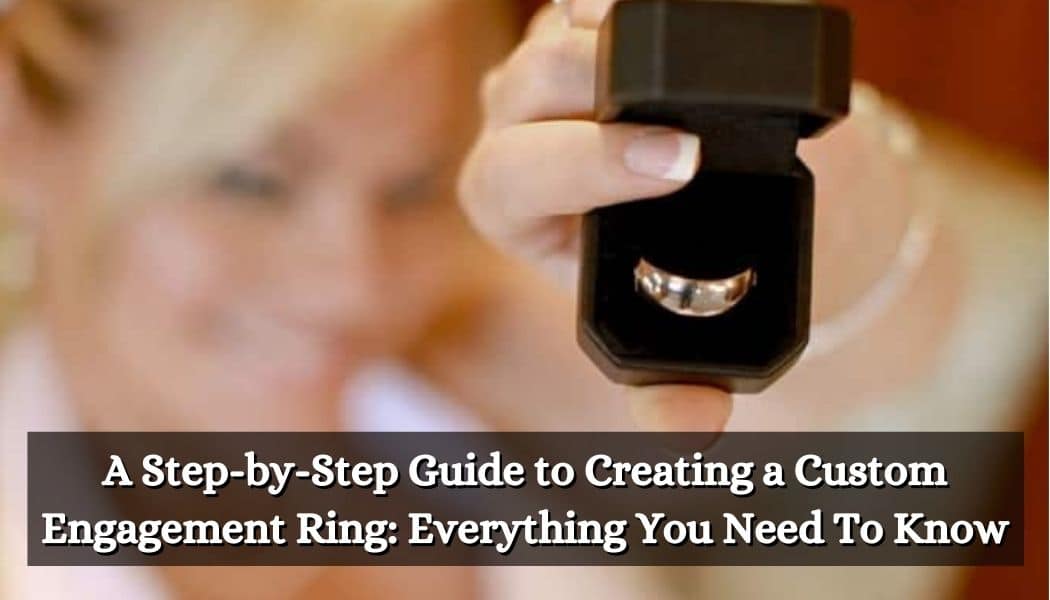
Creating a custom engagement ring is an incredibly exciting process that can often become overwhelming when you factor in all the options and decisions that need to be made.
The process of creating your custom engagement ring has a lot of moving parts, as crafting custom engagement rings requires intricate and extensive attention to detail. It’s essential to take the right steps to make the process as seamless as possible.
When you are able to identify each step, how it works, and pick the right designer to guide you through the process, it will be that much easier to bring your vision to life.
With the right guidance, you can streamline the process and reduce the chances of making mistakes along the way that could slow down your plans.
Use this guide to learn the essential steps involved in creating a custom engagement ring. With the right steps and the right design partner, you can make your experience more straightforward and seamless.
Table of Contents
Determine Who Will be Involved
The first thing you will want to consider is who will be involved in the design process – are you working one on one with a designer, or will your partner be involved? This will impact your timeline, and how you approach the process.
While selecting an engagement ring has traditionally been a solo venture, more couples are now opting to experience the process together. In fact, 62 percent of couples now go engagement ring shopping together.
Your preference may vary depending on the desired element of surprise, timeline, past conversations or hints from your partner. If you prefer going solo, you can take advice from your family or friends. You could also ask your significant other’s family or friends as they may provide some guidance regarding the ring design and size.
There is no wrong answer here. Determine which will be the best route for you to take based on your personal circumstance.
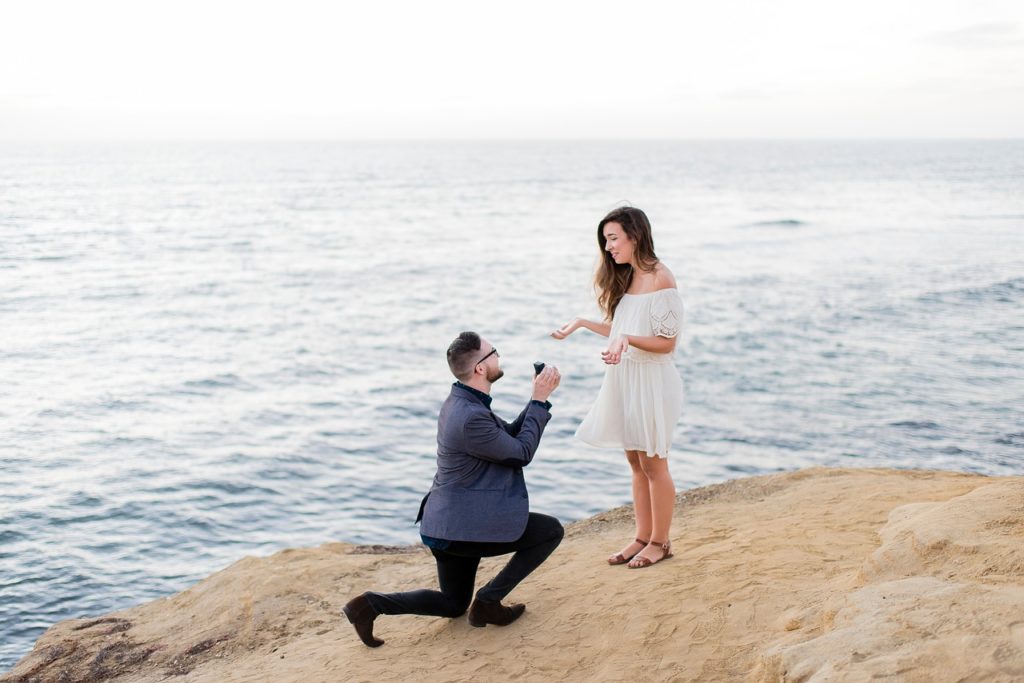
Answer any Unknowns
If you decide to keep the engagement ring a surprise, you will need to take some extra steps to determine your partner’s preferences.
You could observe any rings they have now, browse their Instagram or Pinterest for inspiration, or talk to their family or friends. If your partner has been expecting a proposal, they might have dropped subtle hints regarding their ring. They may even have mentioned some things to you! It’s up to you to dig deep to determine a starting point.
Another way to figure out what your partner wants is by asking them upfront. If you both have discussed getting engaged at some point, you can have an honest conversation to eliminate the guesswork. If you want to maintain the element of surprise, you could ask under the guise that you’re taking notes for the future.
Ask Questions
Before you get started, ask your jeweller questions about the process. Whether you’re unsure about the quality, materials, timeline or aftercare process, open up to your jeweller to clear any doubts. A professional jeweller will ensure that you are comfortable throughout the process and help you understand everything you need to know. A jeweller will also give you the information you need to make educated choices.
Make sure to also find out how you can prolong the ring’s life so you can pass the information on to your partner when you give them a ring. The jeweller may recommend cleaning it frequently or being mindful when to remove it as some situations can cause damage.
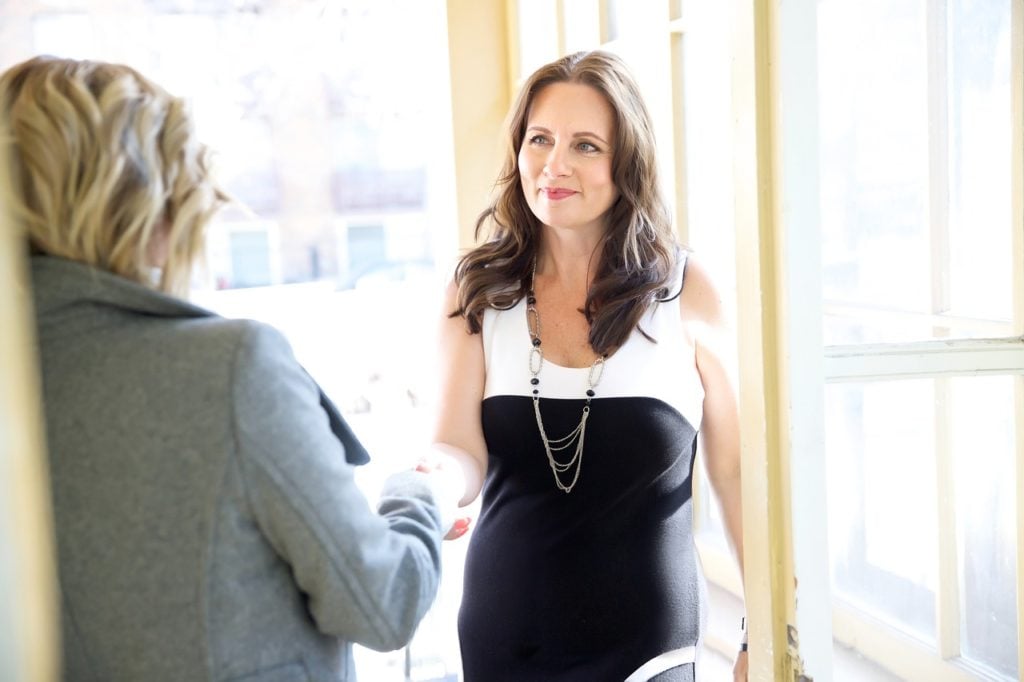
Set a Budget
Setting a comfortable budget is an essential step of the ring purchase process, as it will allow you to narrow down your options.
If you’re having a tough time deciding how much to spend, you can seek help from recently engaged friends and your jeweller to better plan your budget.
You may have heard of the wedding etiquette rule, known as the “three months’ salary rule.” This rule suggests that a ring buyer should spend three months of their salary on an engagement ring for their future spouse.
This idea was derived in the West by an advertising drive from De Beers in the 1930s. When you consider the increase in cost of living, real estate prices, and the couples’ general change in priorities, it’s safe to say this approach is quite outdated.
A New York Times article quoted a Morning Consult survey that the average American spends about four percent (or two weeks) of annual pre-tax income on an engagement ring.
Deciding how much to spend on an engagement ring for your significant other is subjective. You can determine the proper budget by going through your finances and establishing priorities (e.g., size vs. quality) to craft the perfect ring.
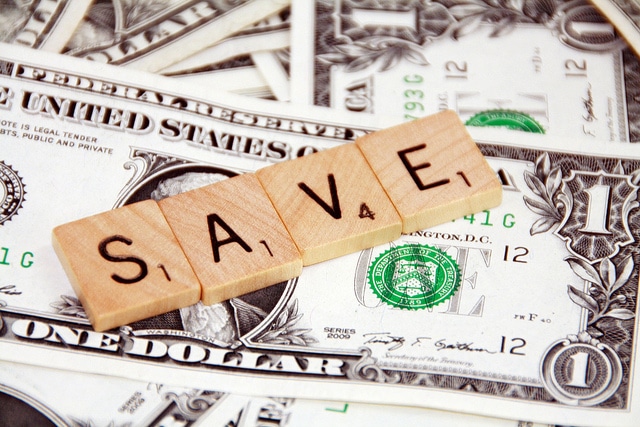
Choose the Materials
The materials that make up your engagement ring will be its defining characteristic. The centre stone, for one, will profoundly impact the overall look of your ring. Some options include mined diamonds, lab-grown diamonds, moissanite, gemstones, sapphires, and morganite.
If your future spouse is environmentally conscious, a lab-grown diamond might be the best choice as it has the least impact on the earth and is a sustainable option.
To identify your partner’s metal preference, whether they prefer platinum, white gold, yellow gold, or rose gold, observe the jewellery they wear daily. If you’re unsure but want to keep the ring a surprise, you can try to fish out their preferences by asking them general questions. When in doubt, white gold is always classic, while yellow gold offers more of a vintage flair.
Select a Special Stone Shape
There are various centre stone shapes that could enhance your engagement ring’s look. A centre stone or diamond shape refers to the general silhouette of the stone and is different from its cut or facet arrangement.
A gemstone’s shape is an important element to determine while selecting an engagement ring as it contributes to the uniqueness of your ring.
The Gemological Institute of America (GIA) shares a list of the most common diamond shapes and highlights the distinctive qualities of each to help you make an informed decision about your purchase.
A round stone is one of the most popular diamond shapes as the angles help enhance its fire and brilliance. A square shape, on the other hand, creates the illusion of a bigger diamond. The stone you choose will play a critical role in the ring’s appearance.
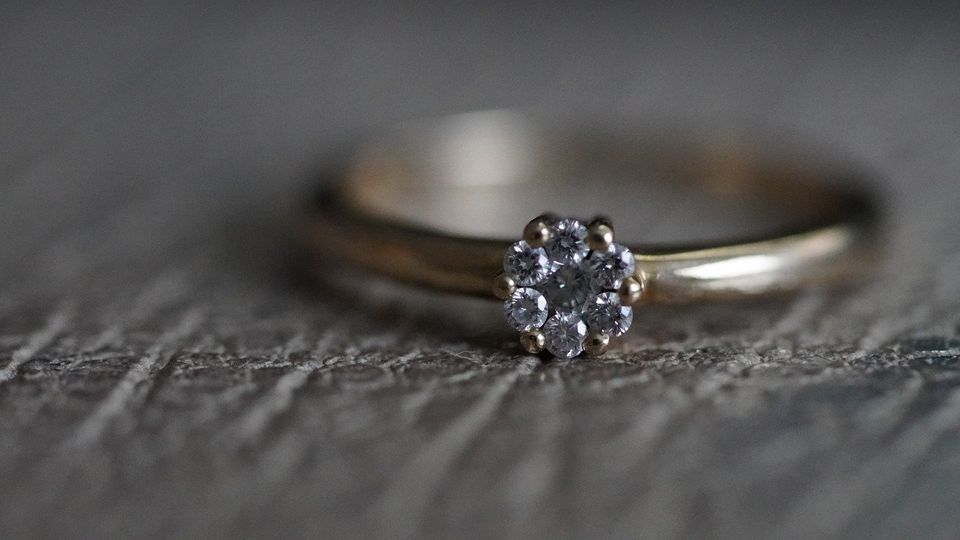
Choose the Cut & Setting
The cut of a diamond refers to its symmetry, polish, and precision, which affects its sparkle. A well-cut diamond allows the light to enter the stone and refract back without getting “lost” by exiting out of the side or bottom of the stone. The cut also indicates the value of its design and craft, so it can be helpful to understand diamond cuts while selecting a ring.
An engagement ring’s cut and setting contribute vastly to its overall design and appearance as it influences how the diamond is shaped to reflect the light. Of the many cuts available on the market, the round brilliant remains the most popular, accounting for more than 70% percent of all diamonds sold today.
The setting of a ring refers to how the gemstones are set or mounted into a metal band. It highlights the beauty of the centre stone(s) and allows the stone to have a more significant impact. The most common settings include halo, three stone, prong, pave, and bezel.
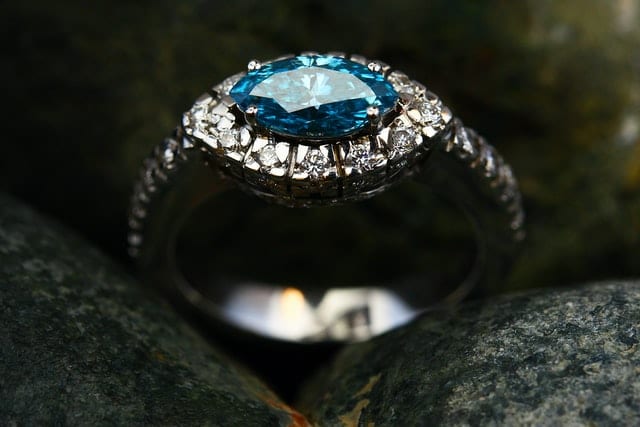
Decide the Overall Design
Once you decide on all of these factors you will be able to better determine the overall design of your ring. In some cases, you may want to work backwards to come up with an overall design, and then identify these different elements that will allow you to bring the design to life.
The overall design of your ring will be dictated by you and your partner’s personal preferences. While some prefer a classic or vintage look, others prefer modern designs that align with current trends.
A classic, timeless design will include simple details with a traditional band and metal type. Solitaire is one of the most classic designs, which features one diamond and no other gemstones to accentuate the main piece.
If your partner has an affinity for styles of the past, a new custom ring can be designed to reflect styles from an older era. Did you know that a ring is only considered truly antique if it is over 100 years old? On the other hand, a vintage ring is one that is 20 years old.
If you prefer a modern design, you can go through recent designs, and research what’s trending. You could also discuss your expectations with your custom jeweller, who can show you the most popular ring designs to help you make an educated decision about the purchase.

Find a Trusted Jeweller
Your jeweller will play a vital role in the design of your custom engagement ring. Visit somewhere local and work with a trusted jeweller to ensure that you make a suitable investment. A good jeweller is likely to have positive reviews online with a long-standing history of customer success.
A professional jeweller will be able to use their experience to bring your vision to life and help guide you along the way by making suggestions based on their expertise. Your jeweller should handcraft your custom engagement ring with immense care and attention to detail.
The custom engagement ring design process is a personal one, so it is important to find a jeweller who will work with you to weigh all of your options and guide you through all aspects of the design process to perfect the custom design.
Building trust and a close connection with your jeweller will help make the process more seamless and help ensure that you are addressing each step of the process with care.
Designing a custom engagement ring is an incredibly personal process, and you want a partner in crime who has your best interest at heart, and the right knowledge and expertise to help you design the perfect, long-lasting ring for your partner.
Allot Time for Production & Track the Progress
Once you determine all the elements that will comprise your ring, it is important to establish a realistic timeline based on your unique design. Plan so that you can ensure your ring is ready in time for your proposal, or plan your proposal based on the projected production timeline. Whatever makes sense for you.
After you have sorted out all the details and placed an order for your unique engagement ring, follow the design process as it occurs. Creating a custom engagement ring can take anywhere between 6 to 10 weeks. However, different factors can affect the duration, such as the complexity of the design, availability of materials, and the designer’s skills.
You can communicate with your jeweller at different stages of the design process to ensure that everything is going as per your plan.
Good communication throughout will allow you to ensure that everything is on track and prevent any delays if something needs to be changed.
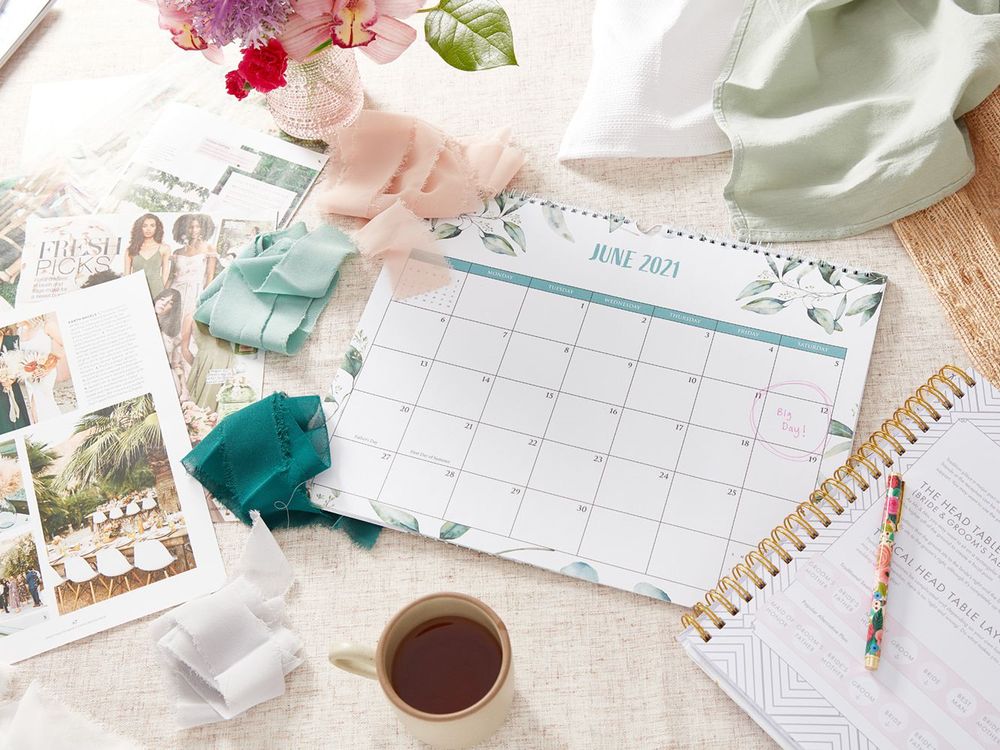
Present the Ring
The last step of the custom engagement process is to show your significant other the final product! Whether you placed the order together or in secret, the finished ring will be a special reveal for both of you.
Infographic – How much money should you spend on a wedding ring
FAQ – Engagement Ring
What is a reasonable price for an engagement ring?
The engagement ring should cost at least two months’ wages. If you earn $60,000 per year, for example, you should spend $10,000 on an engagement ring.
What is the purpose of the engagement ring?
An engagement ring, especially in Western cultures, is a ring that indicates that the person wearing it is engaged to be married. When a partner proposes marriage or when a marriage proposal is approved, they give their potential spouse an engagement ring.
Is it necessary for the man to purchase an engagement ring?
A woman can now propose to a guy using a male engagement ring. You can be undecided about whether or not to buy male engagement rings or male engagement jewellery. The man is not required to buy the male engagement rings because you are the one making the move.
Is a wedding band more valuable than an engagement ring?
Because engagement rings often have a huge diamond as well as other exquisite features such as milgrain or pave, they are more costly than wedding bands. Simple wedding bands, such as a plain metal band or a pave band with tiny diamonds, are more common.
Do you walk down the aisle with your engagement ring on?
To go down the aisle, the bride must wear her engagement ring on her right ring finger, as per traditional customs. The groom would place the wedding band on the bride’s left finger during the ring exchange.




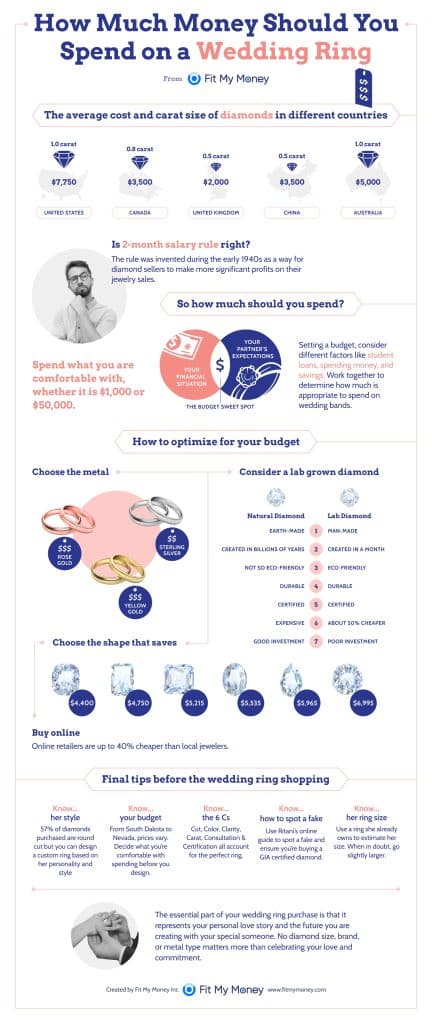








I agreed when you said that setting a budget for purchasing a wedding ring is essential. My brother wanted to propose to his long-term girlfriend. He didn’t want to spend so much for it and only set a budget so that they could allocate extra money to some other stuff they needed to think about for the wedding, like the food and venue.